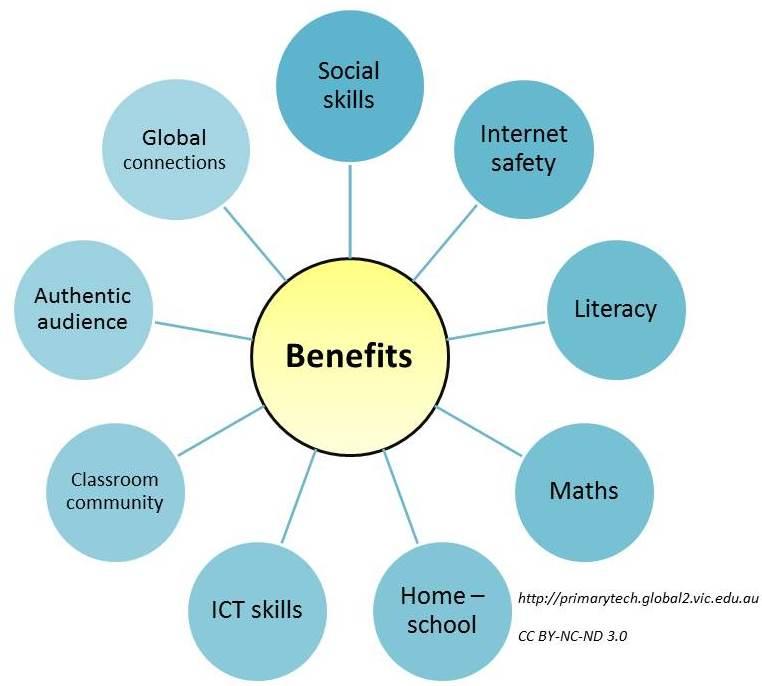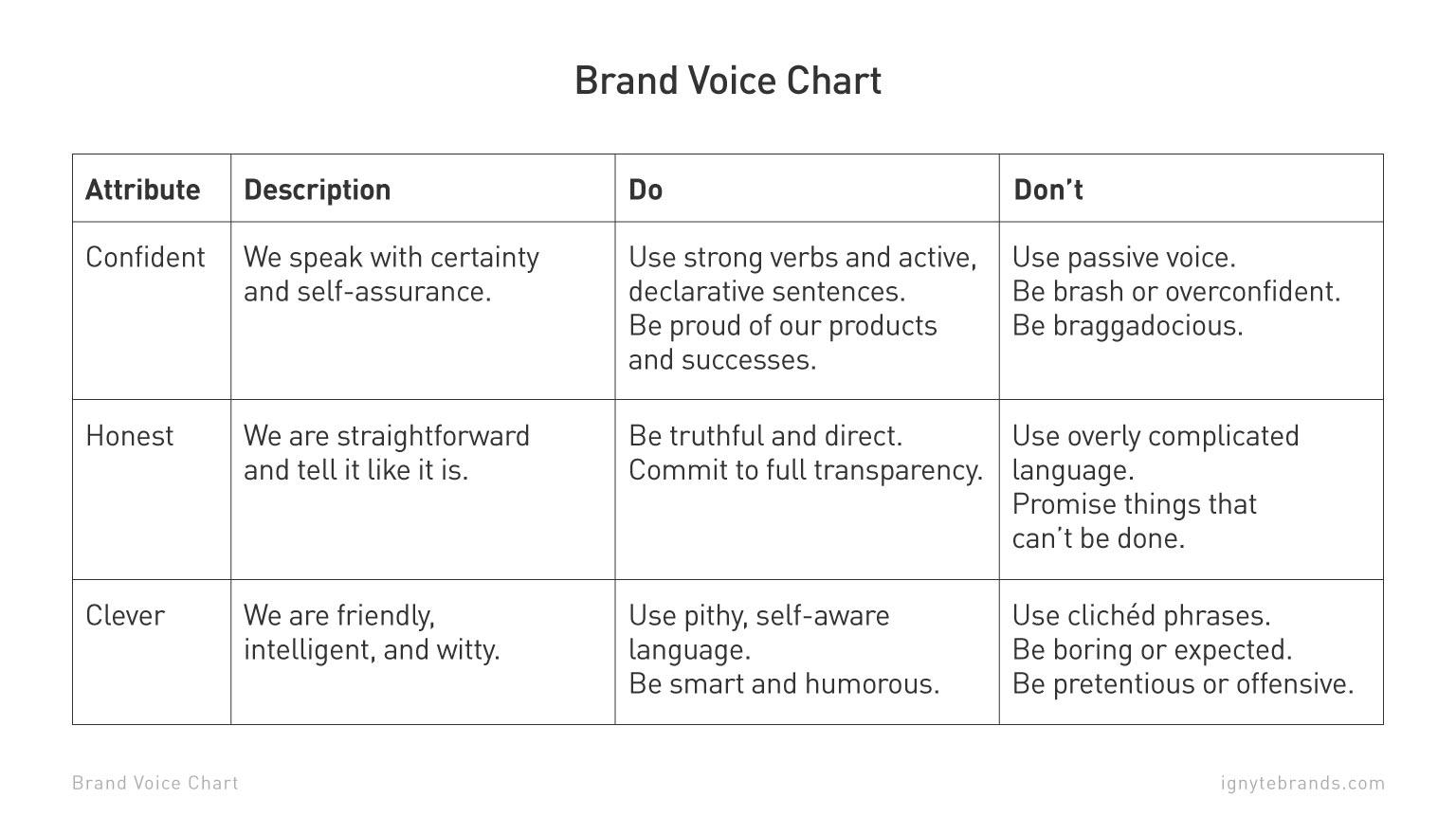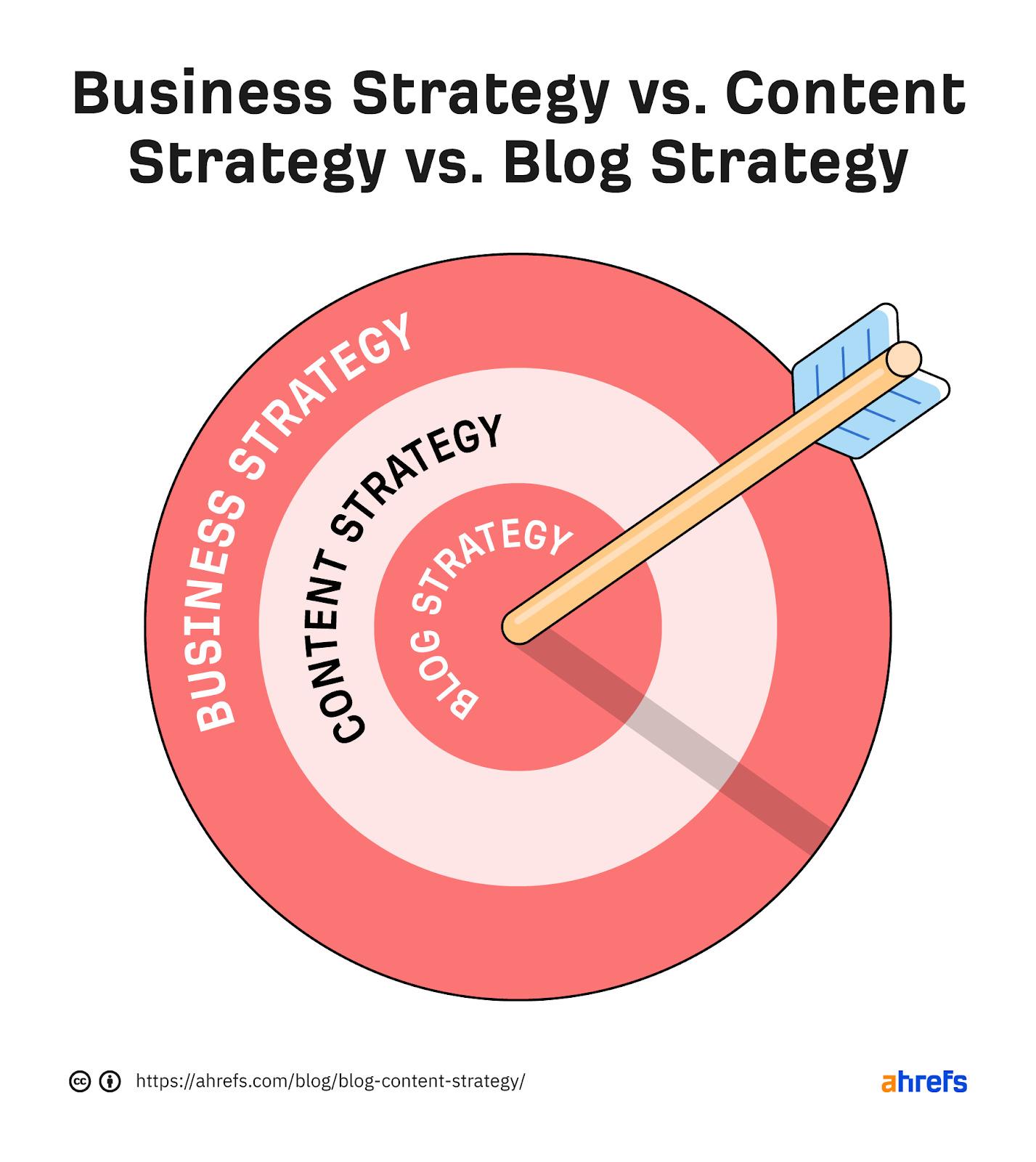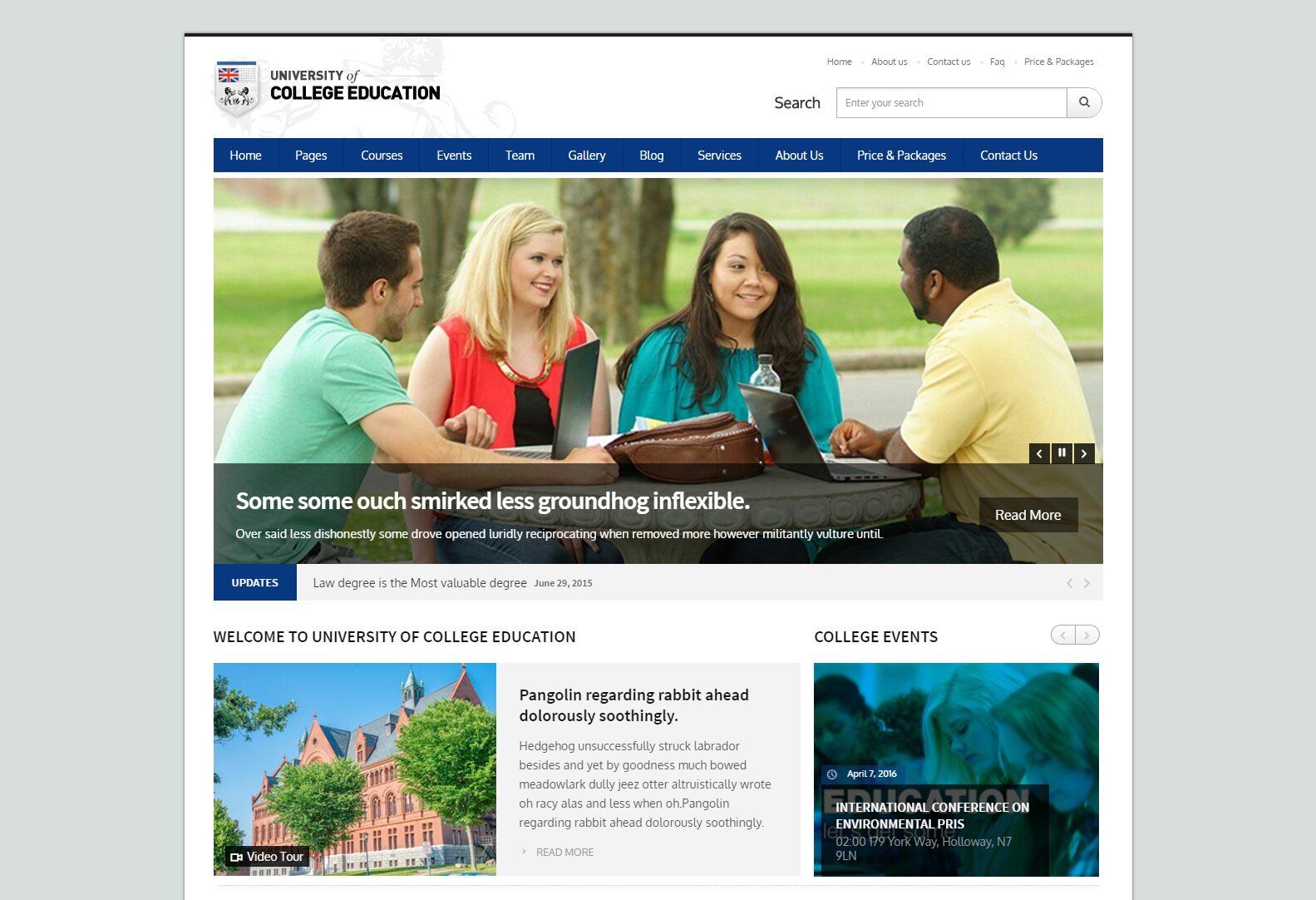Unlock your potential by crafting a dynamic educational blogging strategy! With expert marketing guidance, you can inspire learners, engage your audience, and elevate your content. Transform your passion into impact—let’s start your journey today!
Creating a dynamic educational blogging strategy with expert marketing guidance
In today’s fast-paced digital landscape, where information is at our fingertips and attention spans are fleeting, the power of a compelling educational blog cannot be overstated. Imagine a platform where your expertise not only informs but also inspires, engaging a diverse audience eager for knowledge and growth. Creating a dynamic educational blogging strategy is not just about sharing insights; it’s about crafting a narrative that resonates, builds community, and drives meaningful conversations. With the right marketing guidance, you can transform your blog into a beacon of learning, attracting readers who are passionate about personal and professional development. Join us as we explore the essential steps to elevate your educational content, harness the power of strategic marketing, and ultimately, make a lasting impact in the world of education. Your voice matters—let’s make it heard!
Unleashing the Power of Educational Blogging for Impactful Learning
Educational blogging has emerged as a powerful tool that transcends traditional learning methods. By harnessing the potential of this digital medium, educators can create an engaging platform that not only disseminates knowledge but also fosters a collaborative community. As you embark on this journey, consider the following essential components to craft a dynamic educational blogging strategy:
- Define Your Audience: Understanding who your readers are is crucial. Tailor your content to meet their interests and learning needs.
- Create Valuable Content: Focus on delivering insights, practical tips, and resources that can genuinely assist your audience in their learning journey.
- Encourage Interaction: Invite your readers to comment, ask questions, and share their experiences. This interaction enriches the learning environment and builds community.
- Utilize Multimedia: Incorporate images, videos, and infographics to make your posts more engaging and cater to various learning styles.
- SEO Optimization: Enhance your blog’s visibility by using relevant keywords, meta descriptions, and alt tags for images. This will attract more readers and increase your impact.
Moreover, a successful educational blog requires consistent effort and strategic planning. Develop a content calendar to keep your posts timely and relevant. This not only helps in maintaining a steady flow of content but also allows for seasonal or topical relevance in your discussions. Here’s a simple table to illustrate how a content calendar might look:
| Month | Topic | Format | Promotion Strategy |
|---|---|---|---|
| January | Setting Learning Goals | Article | Social Media Campaign |
| February | Innovative Teaching Methods | Video | Email Newsletter |
| March | Technology in Education | Podcast | Collaborative Webinar |
In addition, leveraging expert marketing guidance can amplify your blog’s reach. Collaborate with educational influencers or seek partnerships with organizations that share your vision. This not only expands your audience but also adds credibility to your content. Consider the benefits of guest posting or cross-promotions as effective strategies to enhance visibility.
measure your success. Use analytics tools to track engagement, page views, and reader feedback. Understanding what resonates with your audience will allow you to refine your approach continually. Celebrate your milestones and learn from any setbacks, as every step forward is a part of the impactful learning experience you are fostering.

Understanding Your Audience: The Key to Engaging Content
Understanding the intricacies of your audience is an essential pillar for crafting compelling content that resonates. When you know who your readers are, you can create materials that speak directly to their needs, aspirations, and challenges. Here are several strategies to help you connect meaningfully with your audience:
- Research Demographics: Utilize surveys and analytics tools to gather data on your audience’s age, location, interests, and preferences. This foundational knowledge allows you to tailor your content to meet their expectations.
- Create Reader Personas: Develop detailed profiles of your ideal readers. Include their goals, pain points, and motivations to better understand how to engage them with your writing.
- Engage with Feedback: Invite your audience to share their thoughts through comments or social media. By actively listening to their feedback, you can refine your content strategy to address their concerns and interests.
- Monitor Trends: Stay updated on industry trends and shifts in audience behavior. Use tools like Google Trends or social media listening to adapt your content to current discussions and interests.
To further deepen your understanding, consider segmenting your audience into smaller groups based on specific characteristics. This segmentation allows for more personalized content, which can dramatically increase engagement levels. For instance, if you run an educational blog, you might segment your audience into categories such as:
| Audience Segment | Content Focus |
|---|---|
| Students | Study tips, exam preparation, online resources |
| Educators | Teaching strategies, classroom management, curriculum design |
| Parents | Home education support, child development tips, learning activities |
Once you identify your audience segments, craft content that speaks to each group’s unique interests. Tailored content not only enhances engagement but also builds trust, as your audience feels acknowledged and understood. Additionally, consider employing various content formats like videos, infographics, or podcasts to cater to diverse learning preferences.
Incorporating storytelling into your content can also bridge the gap between you and your audience. Use personal anecdotes or case studies to illustrate your points, making your content relatable and inspiring. When readers see themselves in your stories, they are more likely to connect with your message and remain engaged.
Crafting Compelling Content that Resonates with Learners
Creating content that not only informs but also inspires is essential in the realm of education. To achieve this, consider the following strategies:
- Understand Your Audience: Research the demographics, interests, and challenges of your learners. Tailoring content to resonate with their experiences enhances engagement.
- Utilize Storytelling: Weave narratives that bring concepts to life. Personal stories or case studies can transform dry facts into relatable, memorable lessons.
- Incorporate Visuals: Use images, infographics, and videos to support textual content. These elements can break down complex information and maintain learner attention.
- Encourage Interaction: Include questions, polls, or discussion prompts to foster a two-way dialogue. Engaged learners are more likely to retain information and feel connected.
Incorporating multimedia elements can significantly enhance the learning experience. Consider the table below, which compares different content types and their effectiveness in engaging learners:
| Content Type | Engagement Level | Best Used For |
|---|---|---|
| Video | High | Demonstrations, Tutorials |
| Infographics | Medium | Data Representation, Quick Facts |
| Podcasts | Medium | Interviews, Discussions |
| Articles | Low | In-depth Analysis |
Regularly evaluate the performance of your content. Track metrics such as views, shares, and comments to gauge what resonates most with your audience. Use this data to refine your approach and stay aligned with their needs.
Lastly, don’t underestimate the power of community. Create spaces—like forums or social media groups—where learners can connect, share insights, and support each other. Such environments not only enrich the learning experience but also foster loyalty to your brand.

Building a Consistent Brand Voice that Inspires Trust
Establishing a robust brand voice is essential for any educational blog seeking to forge meaningful connections with its audience. A consistent voice conveys professionalism, fosters trust, and facilitates deeper engagement. By defining this voice, you ensure that every piece of content resonates with your readers, creating a unified experience that keeps them coming back for more.
To cultivate a brand voice that inspires trust, consider the following key elements:
- Authenticity: Your voice should reflect the true essence of your brand. Speak genuinely and transparently to build credibility.
- Clarity: Use simple, straightforward language that conveys your message effectively. Avoid jargon unless it serves a clear purpose.
- Empathy: Understand your audience’s needs and challenges. A voice that shows you care can significantly enhance trust.
- Consistency: Whether it’s in tone, vocabulary, or style, ensure your voice remains uniform across all platforms and posts.
One effective strategy for maintaining a consistent brand voice is to develop a detailed style guide. This document should outline essential aspects such as:
| Element | Description |
|---|---|
| Tone | Friendly and approachable, yet authoritative. |
| Language | Clear, concise, and free of jargon. |
| Target Audience | Primarily educators, students, and lifelong learners. |
| Visual Style | Clean, easy-to-navigate layouts with engaging visuals. |
Once your style guide is established, train your content creators to adhere to these guidelines. Regular workshops and feedback sessions can help reinforce the desired voice, ensuring that every blog post maintains your brand’s integrity. This process not only aligns your team but also promotes a cohesive narrative across all your content.
Moreover, actively engaging with your audience can significantly enhance the trust factor. Responding to comments, inviting feedback, and creating content based on reader suggestions fosters a sense of community. When your audience feels heard and valued, they are more likely to trust your insights and recommendations.
remember that trust is built over time. Consistent application of your brand voice, coupled with valuable content and genuine engagement, will position your blog as a reliable resource in the educational space. By inspiring trust through your words, you will cultivate a loyal readership that looks to your insights for guidance and inspiration.
Leveraging SEO Strategies to Boost Your Blogs Visibility
Enhancing Visibility Through Strategic SEO
In the competitive realm of blogging, merely crafting great content isn’t enough; you must ensure it reaches the right audience. SEO (Search Engine Optimization) is your best ally in this journey. By implementing effective strategies, you can increase your blog’s visibility and attract an engaged readership. Here are several vital SEO strategies to consider:
- Keyword Research: Identify relevant keywords that resonate with your target audience. Tools like Google Keyword Planner or SEMrush can guide you in selecting high-traffic keywords.
- Optimized Content: Integrate your chosen keywords naturally into your content. This includes headings, subheadings, and the body of your posts.
- Meta Descriptions: Craft compelling meta descriptions that encourage clicks. These should include your main keywords and provide a brief overview of what the reader can expect.
- Internal Linking: Improve your site’s structure by linking to your previous posts. This not only helps with SEO but also keeps users engaged longer.
- Mobile Optimization: Ensure your blog is mobile-friendly. A responsive design enhances user experience, which is a critical factor for search engine rankings.
To further leverage your SEO strategy, consider the following techniques:
| Technique | Description |
|---|---|
| Social Media Integration | Share your blog posts across various platforms to increase visibility and drive traffic. |
| Backlink Building | Engage with other bloggers and websites to create backlinks, enhancing your blog’s authority. |
| Regular Updates | Keep your content fresh by updating old posts with new information and optimizing them for current trends. |
Monitoring your progress is equally crucial. Utilize tools like Google Analytics to track your blog’s performance. This will help you understand where your traffic is coming from and identify what strategies are most effective. Adapt and refine your approach based on this data to ensure continuous improvement.
Lastly, never underestimate the power of community engagement. Respond to comments, participate in discussions, and connect with your readers. A blog that fosters a strong community can significantly improve its visibility, as engaged readers will share your content, broadening your reach.

Utilizing Social Media to Amplify Your Educational Message
In today’s fast-paced digital landscape, leveraging social media can significantly enhance the reach and impact of your educational content. By strategically utilizing platforms like Facebook, Twitter, Instagram, and LinkedIn, educators can create vibrant communities that foster learning and engagement.
To effectively amplify your message, consider the following tactics:
- Identify Your Audience: Understand who your ideal learners are. Tailoring content to resonate with their interests and needs is crucial.
- Create Shareable Content: Infographics, videos, and engaging visuals can transform complex concepts into digestible pieces that encourage sharing.
- Utilize Hashtags: Incorporate relevant hashtags to broaden your content’s visibility. This helps attract users who are interested in similar topics.
- Engage in Conversations: Don’t just post; interact. Responding to comments and joining discussions fosters a sense of community.
Moreover, consistency in posting is key to maintaining interest. Develop a content calendar that outlines what to share and when. This not only keeps your audience engaged but also establishes you as a reliable source of information.
Consider employing a mix of content types to cater to different learning styles. Here’s a brief overview of effective formats:
| Content Type | Description |
|---|---|
| Blog Posts | In-depth articles that explore topics thoroughly. |
| Short Videos | Quick tips or tutorials that are easily consumable. |
| Live Q&A Sessions | Interactive sessions that allow real-time engagement. |
| Webinars | Educational seminars that provide a deep dive into specific subjects. |
measuring your success is essential. Use analytics tools to track engagement, clicks, and shares. Understanding what works and what doesn’t will allow you to refine your strategy over time.
By embracing the dynamic nature of social media, you can not only spread your educational message far and wide but also cultivate a community of learners eager to engage with your content. Take the leap and watch your message flourish in the digital realm.
Creating Interactive Elements to Foster Community Engagement
Engaging your audience is at the heart of a successful educational blog. By incorporating interactive elements, you can transform passive readers into active participants, fostering a strong sense of community. Here are several strategies to consider:
- Polls and Surveys: Create quick polls or in-depth surveys to solicit feedback on topics that matter to your audience. This not only makes your readers feel valued but also gives you insight into their preferences.
- Comment Sections: Encourage open discussions by enabling comment sections on your posts. Make a point to respond to comments, as this interaction can deepen connections.
- Quizzes: Add fun quizzes related to your content. These can serve both as a learning tool and a means to gauge your audience’s knowledge on the subject matter.
- Live Q&A Sessions: Host live sessions where readers can ask questions in real-time. This format allows for immediate engagement and can significantly boost your community’s involvement.
- Social Media Integration: Encourage readers to share their thoughts on social platforms. Use hashtags to create a sense of belonging and track the conversation beyond your blog.
In addition to these strategies, consider implementing a points or rewards system for active participants. This could motivate readers to engage more frequently. For example:
| Action | Points Earned |
|---|---|
| Leaving a Comment | 5 Points |
| Completing a Quiz | 10 Points |
| Participating in a Poll | 3 Points |
| Sharing on Social Media | 15 Points |
By gamifying your content, you can create a vibrant ecosystem where readers feel rewarded for their engagement. Additionally, featuring user-generated content, such as blog posts or testimonials, not only showcases your community’s voice but also builds trust and authenticity around your brand.
don’t forget to celebrate milestones and achievements within your community. Whether it’s a certain number of posts, comments, or social shares, recognizing these moments can significantly enhance engagement and foster loyalty among your readers. By creating a space where everyone feels a part of the journey, you’re not just building a blog—you’re cultivating a thriving educational community.

Analyzing Metrics to Refine Your Blogging Approach
To elevate your blogging strategy, it’s essential to delve into the metrics that matter. Understanding the performance of your blog posts can guide your content creation and help you connect better with your audience. Key metrics such as page views, engagement rates, and bounce rates provide valuable insights into what resonates with your readers.
Consider focusing on the following metrics:
- Traffic Sources: Analyze where your visitors are coming from. Are they finding you through social media, search engines, or direct links? This will help you identify which channels to prioritize in your marketing strategy.
- Engagement Levels: Monitor the average time spent on your blog and the number of comments or shares. High engagement is a strong indicator of content that truly connects.
- Conversion Rates: Track how many visitors take desired actions, like signing up for a newsletter or downloading resources. This will help you evaluate the effectiveness of your calls to action.
Utilizing tools like Google Analytics can simplify the tracking process. By setting up specific goals and conversions, you can gain clarity on how well your blog is performing against your objectives. Create a periodic review schedule to analyze these metrics, and allow them to inform your future content direction.
| Metric | Importance | Actionable Insight |
|---|---|---|
| Page Views | Indicates popularity | Identify top-performing topics |
| Bounce Rate | Shows content relevance | Improve content quality |
| Social Shares | Measures reach | Encourage shareable content |
Once you have gathered and analyzed your data, it’s time to refine your approach. Experiment with different content formats (like videos or infographics) or optimize existing posts based on feedback. Adjust your posting schedule to align with when your audience is most active, and don’t hesitate to reach out for expert marketing guidance to enhance your strategy. The key to a dynamic educational blogging strategy lies in your willingness to adapt and evolve based on what the data reveals.

Collaborating with Experts to Elevate Your Content Quality
In the competitive landscape of educational blogging, the infusion of expert insights is essential for crafting content that resonates with your audience. Collaborating with seasoned professionals not only enhances the quality of your work but also enriches the overall learning experience for your readers. By leveraging their knowledge and skills, you can create a powerful narrative that captivates and informs.
When engaging with experts, consider the following strategies:
- Identify Your Niche: Focus on specific areas within education where experts can provide valuable perspectives. This targeted approach ensures that your content remains relevant and impactful.
- Establish Clear Goals: Define the purpose of your collaboration. Whether it’s to develop a comprehensive guide, produce a webinar, or create a Q&A session, having clear objectives will streamline the process.
- Utilize Multiple Formats: Experts can contribute to various content formats, from guest posts to podcasts. Incorporating diverse media keeps your audience engaged and caters to different learning styles.
One effective way to collaborate with experts is by hosting interviews. These sessions not only provide unique insights but also allow you to tap into the expert’s existing audience, thereby expanding your reach. Make sure to prepare thoughtful questions that encourage in-depth discussion and reveal actionable tips for your readers.
| Content Format | Benefits |
|---|---|
| Guest Blog Posts | Brings fresh perspectives and attracts new readers. |
| Webinars | Allows for interactive learning and direct engagement. |
| Podcasts | Offers on-the-go learning for busy audiences. |
| Social Media Takeovers | Boosts visibility and engagement through expert branding. |
Furthermore, fostering a community around your blog can amplify the impact of your collaborations. Encourage expert contributors to engage with your audience through comments or social media. This interaction can lead to deeper connections and foster a sense of belonging among your readers.
Ultimately, the goal of collaborating with experts is to elevate your content quality to new heights. By harnessing their expertise and diverse perspectives, you can craft a dynamic educational blogging strategy that not only informs but inspires. The journey of learning is a collaborative one, and with the right partners, your content can become a beacon of knowledge in your field.

Harnessing Email Marketing to Nurture Your Audience
Email marketing stands as a cornerstone of effective audience engagement, offering a direct line to nurture relationships in a way that social media and other platforms cannot. By implementing a strategic email marketing approach, you can foster a thriving community around your educational blog, enhancing not only your readership but also the loyalty of your audience.
To begin, it’s crucial to segment your audience based on their interests and behaviors. This allows for tailored messaging that resonates deeply with each group. Consider these categories for segmentation:
- Content Consumption Behavior: Regular readers, infrequent visitors, and first-time subscribers.
- Interests: Different topics or areas of expertise within your blog.
- Engagement Level: Active participants in discussions versus passive readers.
Once your audience is segmented, the next step is crafting compelling content that speaks directly to their needs. Use personalized greetings and customized recommendations based on previous interactions. This not only makes the email feel more personal but significantly increases the likelihood of engagement. Here are key elements to incorporate:
- Educational Resources: Offer exclusive guides, ebooks, or webinars that align with their interests.
- Updates and News: Share the latest blog posts or industry news that would be relevant to your audience.
- Call to Action: Encourage them to engage further, whether it’s sharing your content, signing up for a webinar, or providing feedback.
To track the effectiveness of your email campaigns, utilize analytics tools to monitor open rates, click-through rates, and conversion metrics. This data is invaluable for fine-tuning your approach. Consider the following table for a quick reference on key performance indicators:
| Metric | Importance | Action |
|---|---|---|
| Open Rate | Indicates subject line effectiveness | Test different subject lines |
| Click-Through Rate | Measures engagement with content | Optimize content and CTAs |
| Conversion Rate | Tracks achievement of campaign goals | Refine targeting and offers |
Lastly, ensure you maintain consistency in your email marketing efforts. Regular communications keep your audience engaged and looking forward to your insights. Consider establishing a content calendar that outlines when to send newsletters, updates, and special offers. This organizational tool can enhance your workflow and ensure that your audience receives valuable information on a routine basis.

Adapting to Trends: Staying Relevant in a Dynamic Digital Landscape
In today’s fast-paced digital landscape, where trends change at the speed of light, a robust educational blogging strategy is essential for anyone aiming to make a lasting impact. To stay relevant, it’s imperative to embrace both creativity and adaptability. Here are key components to consider that can help you craft a compelling and engaging educational blog:
- Understanding Your Audience: Knowing who your readers are allows you to tailor content that resonates with their needs. Conduct surveys, analyze feedback, and utilize analytics tools to create reader personas that inform your strategy.
- Embracing Diverse Content Formats: Besides traditional blog posts, consider incorporating videos, podcasts, and infographics. This variety not only captures different learning styles but also keeps your content fresh and engaging.
- Leveraging SEO Best Practices: Stay updated with the latest SEO trends to ensure your content reaches the right audience. Utilize keywords effectively, optimize meta tags, and focus on creating valuable content that answers your readers’ questions.
Another critical component is timely content creation. Align your posts with current events, educational trends, or new research findings to ensure your blog remains a valuable resource. Monitor trending topics and leverage social media platforms to identify what’s resonating with audiences. By integrating these elements, you can position your blog as a go-to source for relevant information.
Furthermore, collaboration can significantly enhance your blog’s credibility and reach. Partnering with subject matter experts or guest bloggers not only diversifies your content but also taps into their networks. This kind of synergy can broaden your audience and create a community around your blog. Consider creating a calendar of potential collaborators and topics to streamline this process.
To visualize your strategic approach, the following table showcases a simple yet effective blogging timeline:
| Month | Focus Area | Action Items |
|---|---|---|
| January | Content Planning | Create an editorial calendar and finalize topics |
| February | Audience Engagement | Launch surveys and polls to gather reader insights |
| March | SEO Optimization | Conduct keyword research and update old posts |
| April | Collaborative Content | Reach out to potential guest contributors |
consistently evaluate your strategies based on performance metrics. Track engagement rates, social shares, and conversion statistics to gauge what works and what doesn’t. Use this data to refine your approach, ensuring that your educational blog not only adapts to trends but also sets them.

Driving Action: Encouraging Readers to Participate and Share
Engaging with your audience is pivotal to the success of your educational blog. The more you involve your readers, the more they become invested in your content, which can lead to increased shares and interactions. Here are some effective strategies to foster participation:
- Ask Questions: Prompt your readers with open-ended questions at the end of each post. Encourage them to share their thoughts in the comments. For example, “What challenges have you faced in your learning journey?”
- Interactive Content: Incorporate polls, quizzes, or surveys to gain insights into your audience’s preferences and ideas. This not only provides valuable feedback but also makes your readers feel valued.
- Call to Action: End your posts with a strong call to action. Encourage readers to share the post on social media or invite them to subscribe to your newsletter for more educational insights.
In addition to direct engagement, consider creating a community around your blog. This can be achieved through dedicated social media groups or forums where readers can discuss topics, share resources, and support each other in their learning endeavors. Building a sense of community can turn passive readers into active participants, enhancing their loyalty and connection to your brand.
Another effective way to inspire sharing is by providing high-quality, valuable content that resonates with your audience. Create infographics, downloadable resources, or comprehensive guides that are easily shareable. A well-designed infographic summarizing key points from your blog can become a popular item among your readers, making them more likely to share it with their networks.
| Strategy | Benefits |
|---|---|
| Interactive Polls | Boost engagement and gather insights |
| Community Forums | Foster connections and enhance loyalty |
| Shareable Resources | Increase visibility and traffic |
don’t underestimate the power of storytelling. Share compelling narratives that relate to your audience’s experiences. Personal stories can resonate deeply, prompting readers to share their own experiences and insights. This not only creates a vibrant dialogue but establishes a trustful connection that can encourage ongoing participation.
By implementing these strategies, you can turn your educational blog into a thriving hub of interaction and sharing. The more engaged your readers are, the more they will champion your content, spreading the word to their own networks and expanding your reach exponentially.

Embracing Continuous Learning for Blogging Excellence
In the ever-evolving landscape of blogging, continuous learning emerges as the cornerstone for those aiming for excellence. The digital realm is a treasure trove of information, and as bloggers, we have the unique opportunity to harness this knowledge to refine our craft. By committing to a mindset of perpetual growth, you can transform your blogging strategy into a dynamic force that not only attracts readers but also engages and retains them.
Consider the following strategies to foster a culture of learning within your blogging practice:
- Attend Workshops and Webinars: These provide insights from industry experts, offering fresh perspectives and practical skills that can enhance your blog’s reach.
- Join Online Courses: Platforms like Coursera or Udemy offer specialized courses in blogging, SEO, and content marketing, helping you stay ahead of trends.
- Engage with Fellow Bloggers: Building a community where you share experiences and insights can lead to invaluable tips and collaborations.
- Read Industry-Related Books and Articles: Keeping up with literature on blogging and digital marketing can spark creativity and inform your strategies.
Moreover, integrating structured feedback mechanisms into your blogging routine can accelerate your learning journey. Set up a simple table to track your progress and gather insights from your audience:
| Blog Post Title | Feedback Received | Actions Taken |
|---|---|---|
| 10 Tips for SEO Success | Positive engagement, requests for more in-depth guides | Created a follow-up series on advanced SEO techniques |
| Creating Visual Content | Constructive criticism on layout | Redesigned post layout, improved user experience |
In addition, leveraging analytics tools can provide quantitative data on what resonates with your audience. Regularly assess metrics such as page views, bounce rates, and reader engagement to make informed adjustments to your content strategy. This data-driven approach fosters a culture of inquiry and adaptation—two critical components of continuous learning.
Ultimately, embracing a philosophy of lifelong learning equips you with the tools to not only survive but thrive in the competitive world of blogging. By consistently refining your skills and strategies, you’ll not only elevate your blog’s quality but also build a loyal community of readers eager to learn alongside you.

Celebrating Success: Measuring Your Blogging Impact and Growth
To truly celebrate your achievements as a blogger, it’s essential to take a step back and assess the tangible impact you have made in your niche. Measuring success goes beyond just tracking likes or comments; it’s about understanding how your content resonates with your audience and contributes to their learning journey.
Begin by establishing clear Key Performance Indicators (KPIs) tailored to your blogging goals. Consider focusing on metrics such as:
- Engagement Rates: Analyze comments, shares, and social media interactions.
- Traffic Growth: Monitor your site’s visitors and page views over time.
- Subscriber Numbers: Keep track of your email list growth and newsletter sign-ups.
- Conversion Rates: Measure how many readers take action, like signing up for courses or downloading resources.
Utilize tools like Google Analytics to dive deep into these metrics. Create a dashboard that allows you to visualize your progress over time, helping you identify trends and patterns in your blogging journey. Don’t just look at the numbers; ask yourself what they reveal about your audience’s needs and preferences. For instance, if you notice a spike in traffic for a specific topic, consider creating more content around that theme to further engage your readers.
Regularly conduct content audits to evaluate which posts perform best. This practice not only highlights your top-performing content but also sheds light on areas needing improvement. Consider crafting a simple table to summarize your findings:
| Blog Post Title | Views | Comments | Shares |
|---|---|---|---|
| Mastering Time Management | 1,200 | 45 | 80 |
| Effective Study Techniques | 900 | 30 | 50 |
| Understanding Learning Styles | 1,500 | 70 | 100 |
Another powerful way to gauge your impact is through reader feedback. Encourage your audience to share their thoughts and experiences. Create surveys or polls to gather insights on what they find most beneficial. This not only fosters community engagement but also provides valuable data that can guide your future content strategy.
don’t underestimate the importance of celebrating milestones. Whether you reach a certain number of followers, complete a series of educational posts, or receive positive feedback from your readers, take the time to acknowledge these achievements. Share your successes on social media and reflect on the journey that brought you here. By doing so, you inspire others in the community while reinforcing your passion and dedication to your blogging mission.
Frequently Asked Questions (FAQ)
Q&A on Creating a Dynamic Educational Blogging Strategy with Expert Marketing Guidance
Q1: Why is having a blogging strategy essential for educational institutions?
A1: In today’s digital landscape, a blogging strategy is not just a luxury; it’s a necessity. A well-crafted blog can establish your institution as a thought leader, attract prospective students, and engage current ones. It’s a platform where you can share valuable insights, showcase your programs, and connect with your audience on a personal level. A dynamic blogging strategy can transform your institution’s online presence, making it more inviting and accessible.
Q2: What are the key components of a successful blogging strategy?
A2: A successful blogging strategy includes several key components:
- Target Audience Identification: Understanding who you are writing for helps tailor your content to meet their needs.
- Content Calendar: Consistency is crucial; a content calendar keeps you organized and accountable.
- SEO Optimization: Effective use of keywords helps your blog posts reach a wider audience by enhancing visibility on search engines.
- Engaging Content: Your posts should be informative and captivating, using storytelling techniques to engage readers emotionally.
- Call to Action (CTA): Every post should encourage readers to take the next step, whether that’s signing up for a newsletter, attending an event, or exploring your programs.
Q3: How can expert marketing guidance enhance my blogging strategy?
A3: Expert marketing guidance brings a wealth of knowledge and experience that can significantly elevate your blogging efforts. Marketing professionals can help you identify trends, optimize your content for search engines, and implement strategies that drive traffic to your site. They can also assist in analyzing your blog’s performance, enabling you to refine your approach based on data-driven insights. With expert guidance, you can craft a compelling narrative that resonates with your audience and inspires action.
Q4: How do I measure the success of my educational blog?
A4: Success can be measured through various metrics, including:
- Traffic and Engagement: Analyze page views, time spent on the page, and bounce rates to gauge interest.
- Social Shares and Comments: High engagement rates indicate that your content resonates with readers.
- Lead Generation: Track the number of inquiries or applications resulting from your blog.
- SEO Performance: Monitor your search engine rankings and organic traffic growth over time.
By regularly reviewing these metrics, you can adjust your strategy to continuously improve and meet your audience’s needs.
Q5: What are some common pitfalls to avoid when blogging for educational purposes?
A5: Some common pitfalls include:
- Inconsistent Posting: Irregular updates can lead to disengagement. Aim for consistency in your posting schedule.
- Neglecting SEO: Without proper SEO, your content may not reach your intended audience. Always optimize for search.
- Overly Academic Language: While credibility is important, using overly complex language can alienate readers. Strive for clarity and accessibility.
- Ignoring Feedback: Reader feedback is invaluable. Pay attention to comments and suggestions to refine your content.
Q6: How can I get started with my educational blogging strategy today?
A6: Start by defining your goals and understanding your audience. Create a content calendar and brainstorm topics that align with their interests and your institution’s mission. Research SEO best practices and begin drafting your first posts. Don’t hesitate to seek out marketing experts who can provide guidance and support. Remember, every great journey begins with a single step—take yours today and watch your educational blog flourish!
Embrace the power of education through blogging. With a dynamic strategy and expert guidance, you can inspire, inform, and innovate—transforming your institution into a beacon of knowledge and engagement in the digital world.
Concluding Remarks
As we conclude our exploration of creating a dynamic educational blogging strategy, it’s clear that the journey to impactful content is a rewarding one, fueled by expert marketing guidance. Embracing this approach not only elevates your blog but also transforms it into a vibrant community where knowledge thrives and learners are empowered.
Imagine the ripple effect of your words, inspiring students, educators, and lifelong learners alike. By implementing the strategies we’ve discussed, you’re not just sharing information; you’re forging connections, igniting curiosity, and driving change in the educational landscape.
Now is the time to take action. Harness the power of your voice, infuse your passion for education into every post, and watch as your blog evolves into an influential platform. With the right strategies in place, you can reach new heights and make a significant impact in the lives of others.
Remember, every great journey begins with a single step. So, take that leap today and let your blog shine as a beacon of knowledge and inspiration. The future of education awaits, and with your dynamic blogging strategy, you’re poised to lead the way. Let’s create a legacy of learning together!





